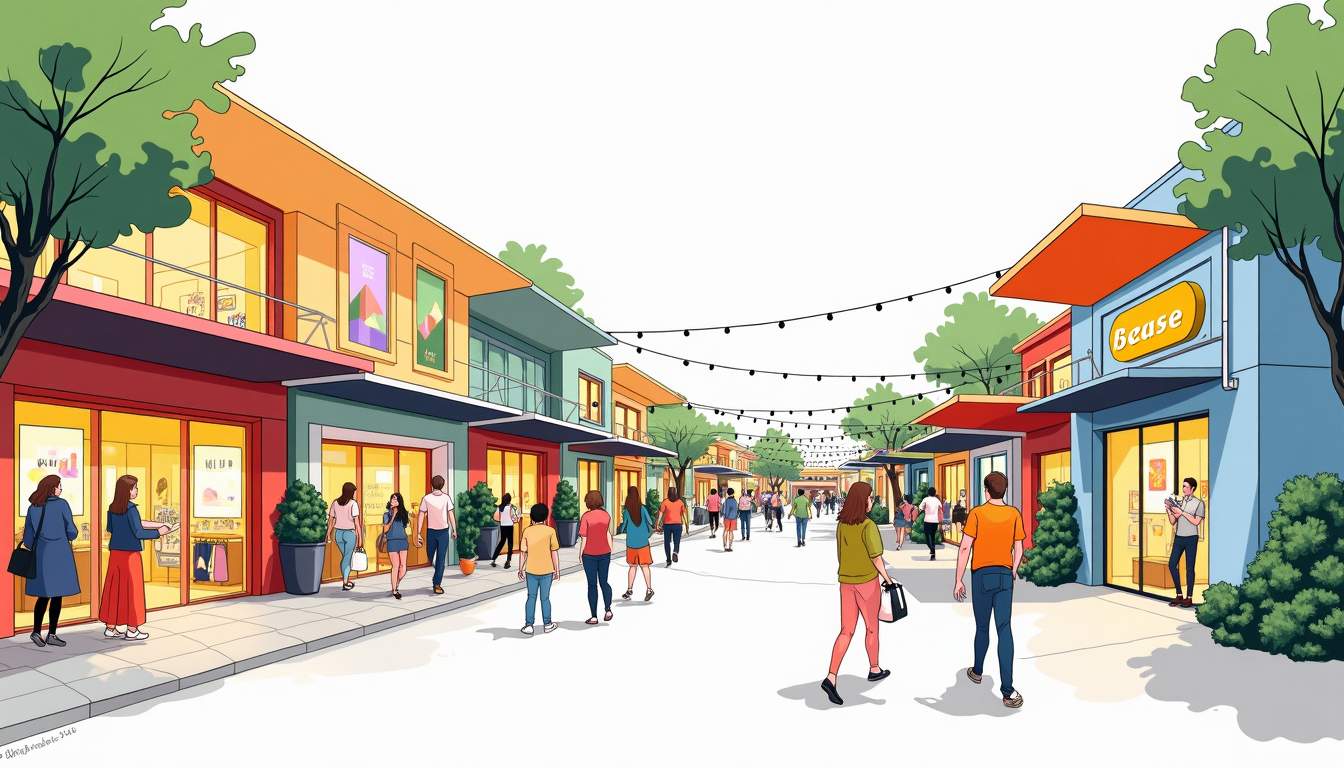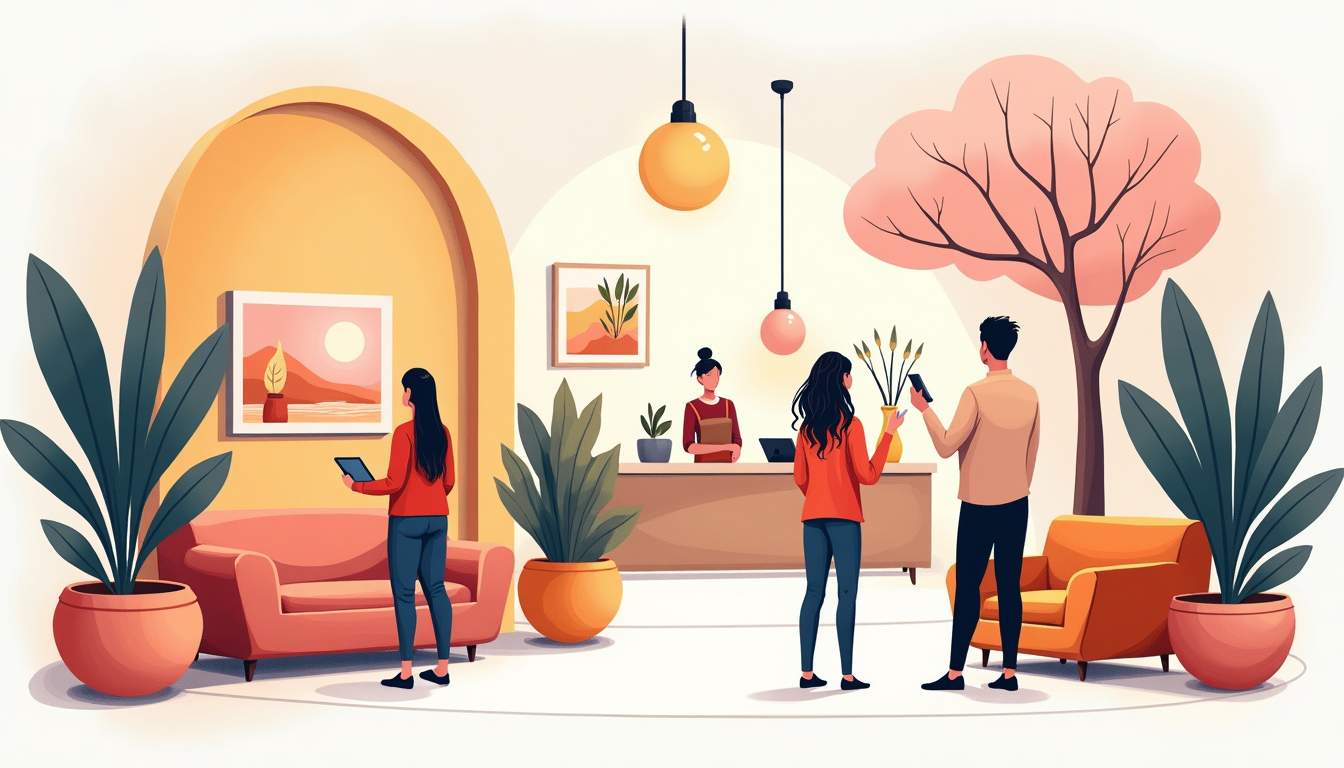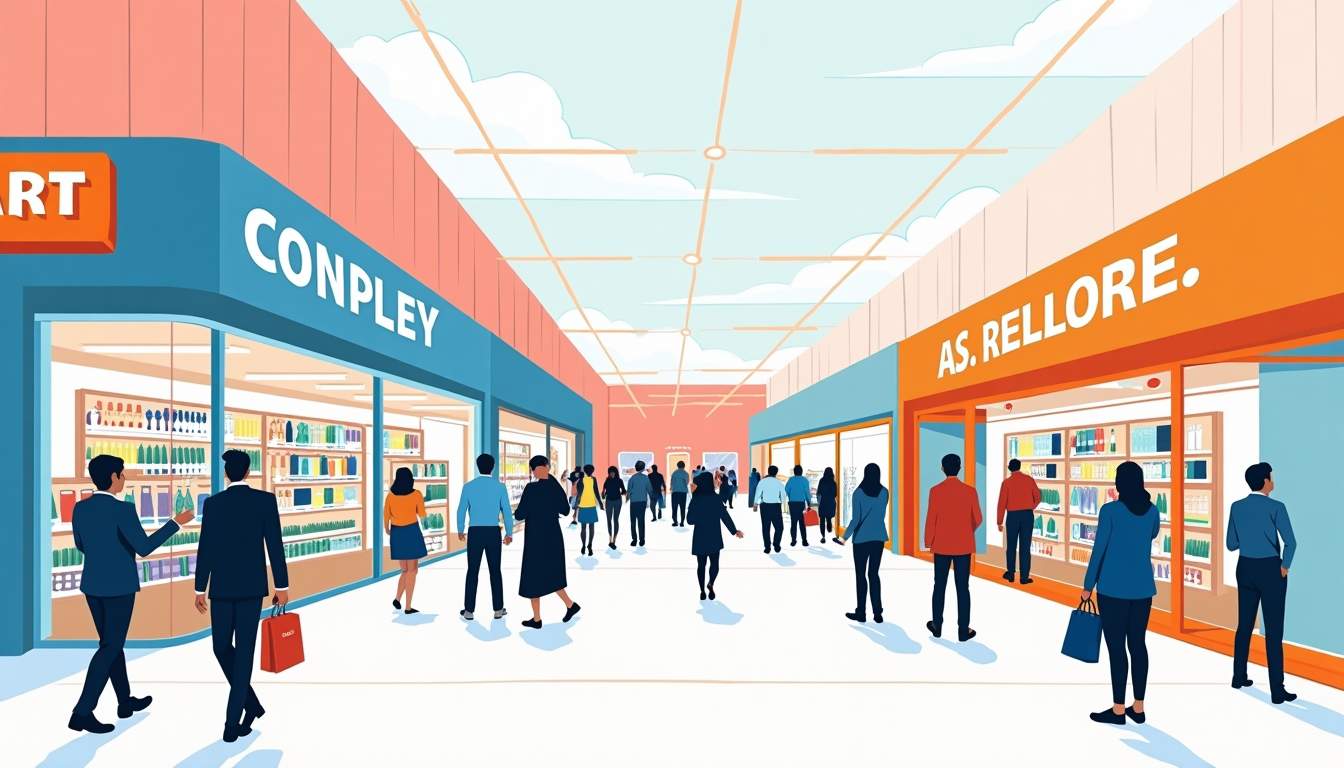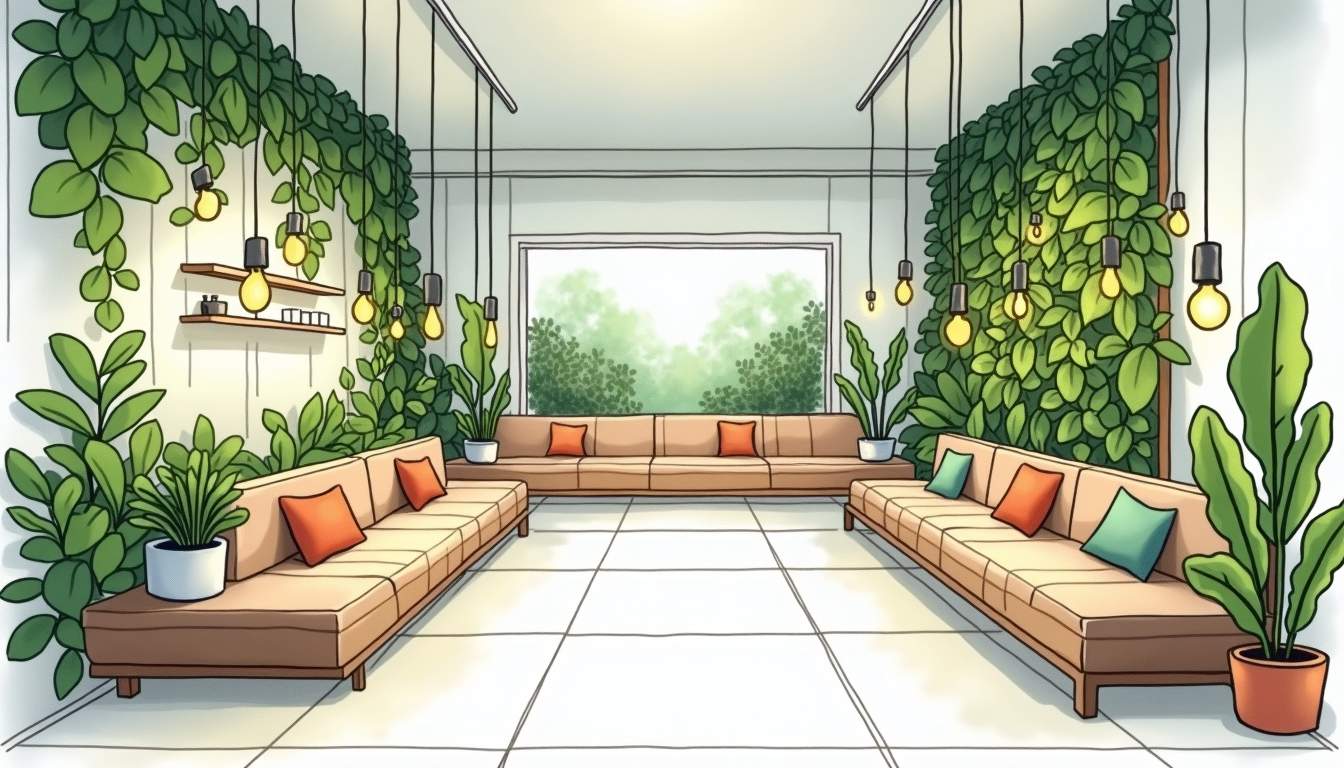
Walk into any bustling shopping center or entertainment complex, and you’ll notice something striking: it’s not just about what’s being sold or offered anymore. It’s about how the space makes you feel, the stories it tells, and the memories it helps create. Leisure and retail design has evolved beyond mere functionality. It’s now a powerful tool to craft experiences that pull people in and keep them coming back.
Designing for Emotion: The Heartbeat of Visitor Experience
People don’t just visit places—they seek moments. Whether it’s a boutique store, a cinema, or a mixed-use leisure space, the design has to tap into emotions. A well-designed environment can spark curiosity, comfort, excitement, or nostalgia.

Take the example of a bookstore café that combines warm lighting, cozy seating, and subtle background music. It invites visitors to linger, browse, and savor their time. This emotional connection transforms a simple shopping trip into a cherished outing. The aroma of freshly brewed coffee wafts through the air, mingling with the scent of new books, creating an olfactory experience that enhances the atmosphere. Patrons can find a quiet nook to read or engage in conversation, fostering a sense of community and belonging that makes them want to return.
Designers achieve this by carefully considering color palettes, textures, lighting, and spatial flow. For instance, soft, natural tones paired with tactile materials like wood and fabric can create a welcoming atmosphere. On the other hand, bold colors and dynamic shapes might energize a space aimed at younger crowds or entertainment venues. The strategic placement of furniture can also encourage social interaction, with communal tables promoting connection and smaller, intimate seating arrangements inviting private conversations.
Lighting: More Than Illumination
Lighting shapes perception. It guides visitors through a space and highlights key features. In retail, spotlighting products can create focal points that draw attention. In leisure environments, ambient lighting can set the mood, whether it’s a relaxing lounge or an adrenaline-pumping arcade.
Adjustable lighting systems allow spaces to transform throughout the day or for special events, adding versatility and freshness. This adaptability keeps the environment engaging and responsive to visitor needs. For instance, a gallery might use soft, diffused lighting during quiet hours to create a serene viewing experience, while transitioning to brighter, more dynamic lighting for evening events that encourage socializing and interaction. Such thoughtful manipulation of light not only enhances the aesthetic appeal but also plays a crucial role in shaping the emotional journey of each visitor, making them feel more connected to the space and its offerings. To explore innovative lighting design and architectural solutions, visit HPW Architecture.
Spatial Storytelling: Crafting Journeys, Not Just Layouts
Imagine walking through a retail mall designed like a winding street in a quaint village. Each turn reveals a new scene—a flower market, a café, a boutique. This kind of spatial storytelling turns a simple visit into an adventure, engaging the senses and sparking curiosity. The ambient sounds of a bubbling fountain or the scent of fresh pastries wafting from a nearby bakery can transport visitors into a different world, making the experience memorable and immersive.
Leisure and retail spaces that use narrative-driven design encourage exploration. Visitors feel compelled to discover what’s around the next corner, increasing dwell time and the likelihood of purchases or repeat visits. This approach not only enhances customer satisfaction but also fosters a sense of community, as people gather in shared spaces that invite interaction and connection. The design becomes a backdrop for social experiences, where friends can meet, families can bond, and strangers can share a moment of joy.
Zones with Purpose
Breaking down large spaces into distinct zones helps manage visitor flow and create varied experiences. A family-friendly zone with interactive elements can coexist alongside a sleek, minimalist luxury section. This diversity caters to different preferences and occasions, allowing each visitor to find their niche. For instance, a children's play area might feature colorful installations that spark creativity, while an upscale lounge invites adults to unwind with a glass of wine, each zone telling its own unique story.
Clear signage and intuitive pathways reduce frustration and make the journey seamless. When visitors know where to go without confusion, their overall satisfaction rises. Additionally, incorporating elements like art installations or themed decor along the pathways can enhance the narrative, guiding visitors through a visual journey that complements the physical layout. Such thoughtful design not only elevates the shopping experience but also transforms the space into a canvas where stories unfold, encouraging guests to linger longer and engage more deeply with their surroundings.
Technology Integration: Enhancing, Not Overwhelming
Interactive screens, augmented reality, and smart mirrors are becoming common in retail and leisure design. But technology should serve the experience, not dominate it.

Successful spaces use tech to add layers of engagement. For example, a clothing store might offer virtual try-ons, allowing visitors to see how outfits look without changing. A museum or gallery might use AR to bring exhibits to life, deepening understanding and enjoyment. These immersive experiences not only captivate visitors but also encourage them to linger longer, fostering a deeper connection with the brand or exhibit. The key lies in seamlessly integrating these technologies into the environment, ensuring they enhance the visitor's journey rather than distract from it.
Personalization Through Data
Collecting visitor data responsibly enables tailored experiences. Personalized recommendations, exclusive offers, or customized environments make visitors feel valued. However, transparency and respect for privacy are crucial to maintaining trust. For instance, a visitor to a retail space might receive notifications about sales on items they previously viewed, creating a sense of attentiveness from the brand. This level of personalization can transform a standard shopping trip into a curated experience, where the technology feels like a helpful companion rather than an intrusive presence. Furthermore, leveraging data analytics allows businesses to understand trends and preferences, enabling them to adapt their offerings in real-time to meet the evolving desires of their clientele.
Creating Social Spaces: The Power of Connection
People visit leisure and retail venues not just to shop or be entertained but to connect—with friends, family, or even strangers. Design that fosters social interaction adds immense value. In an age where digital communication often takes precedence, the importance of physical spaces that encourage face-to-face interaction cannot be overstated. These environments serve as a backdrop for memories, laughter, and shared experiences, enhancing the overall emotional connection individuals feel to a place.
Communal seating areas, interactive installations, and event spaces encourage gathering. Pop-up shops or rotating exhibits keep the environment dynamic and give visitors reasons to return. Additionally, incorporating elements like art displays or performance areas can elevate the experience, sparking conversations and inspiring creativity among visitors. The thoughtful integration of technology, such as free Wi-Fi or charging stations, can further enhance the social experience, allowing guests to share their moments in real-time and engage with the venue's online community.
Food and Beverage as Experience Anchors
Dining options have become central to leisure and retail environments. Food courts have transformed into curated food halls featuring local chefs and artisanal vendors. These spaces offer more than sustenance—they’re places to socialize, relax, and explore new tastes. The rise of food experiences, such as cooking classes or tasting events, invites patrons to participate actively, deepening their connection to the venue and its offerings. This shift towards experiential dining not only enriches the culinary landscape but also fosters a sense of community among patrons who share a passion for food.
Designing these areas with comfort and style in mind enhances their appeal. Outdoor terraces, greenery, and flexible seating arrangements contribute to a welcoming atmosphere. The incorporation of local materials and design elements that reflect the culture of the area can create a sense of place, making each visit feel unique. Furthermore, the strategic placement of lighting and sound can influence the mood and energy of the space, encouraging longer stays and more interactions. By prioritizing the sensory experience, venues can transform dining into a memorable event that resonates with visitors long after they leave.
Sustainability and Well-being: Designing for the Future
Visitors increasingly expect spaces to reflect environmental responsibility and promote well-being. Incorporating sustainable materials, energy-efficient systems, and biophilic design elements not only reduces environmental impact but also enhances visitor comfort.

Natural light, indoor plants, and air quality improvements contribute to healthier environments. These factors can increase visitor satisfaction and encourage longer stays.
Adaptive Reuse and Community Integration
Repurposing existing buildings or integrating local culture into design fosters a sense of place and community pride. It also reduces waste and preserves heritage. Spaces that resonate with their surroundings feel authentic and inviting.
Measuring Success: Beyond Foot Traffic
Traditional metrics like visitor counts and sales figures remain important, but experience-driven design demands deeper insights. Understanding visitor behavior, sentiment, and engagement provides a fuller picture.
Tools such as heat maps, feedback kiosks, and social media monitoring help gather qualitative and quantitative data. This information guides continuous improvement, ensuring the space evolves with visitor needs.
Creating Loyalty Through Experience
When visitors associate a space with positive emotions and memorable moments, loyalty follows. Repeat visits, word-of-mouth recommendations, and brand advocacy are powerful outcomes of thoughtful leisure and retail design.
Final Thoughts
Leisure and retail design is no longer about simply filling space with products or attractions. It’s about crafting immersive, meaningful experiences that resonate emotionally and socially. Thoughtful design invites visitors to stay longer, explore more, and return often.
By focusing on emotion, storytelling, technology, social connection, sustainability, and measurement, designers create environments that don’t just drive visits-they build communities and create lasting memories.